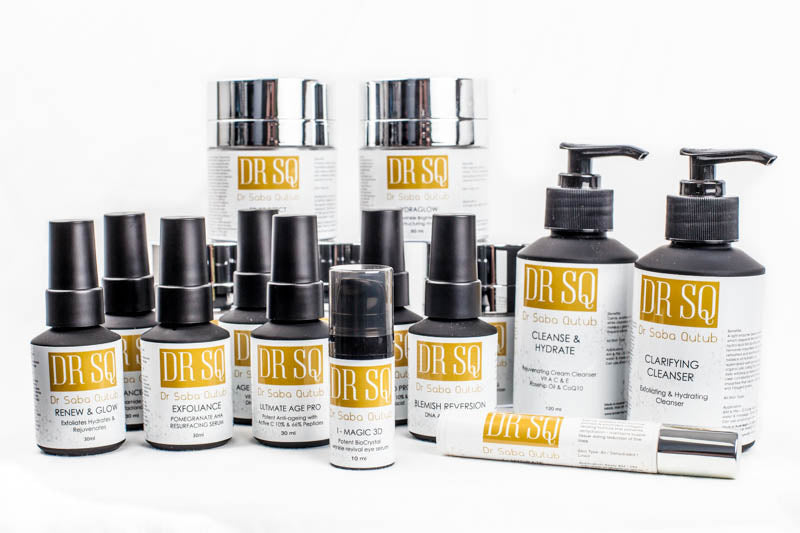Can You Use Niacinamide with Retinol?

Niacinamide can aid hyperpigmentation and control excess oil, while retinol is quite able to speed up the skin’s regeneration process. But can you use them together safely? Many skin experts suggest layering them together, and according to them, it's a great combination. In fact, niacinamide can help the skin tolerate retinol better.
This blog discusses what you must know about layering niacinamide with retinol, necessary precautions, and how to incorporate them into your skincare routine.
What Can Niacinamide Do to Your Skin?
Niacinamide, also called vitamin B3, which rejuvenates ageing facial skin, has an important role in repairing skin damage caused by free radicals. Niacinamide is popular for its skin brightening and anti-ageing properties, but it has much more to offer. It can boost collagen production and inhibit the breakdown of collagen that occurs in the body. As a result, skin elasticity, texture, and firmness improve.
It also helps the skin absorb vitamins and other nutrients more efficiently and aids the skin in maintaining its moisture levels. It’s an effective choice for oily-skinned people as it can balance sebum production.
It exhibits protective effects against;
- acne
- rosacea
- inflammation
-
acne scars and,
- post-acne hyperpigmentation.

What Can Retinol Do to Your Skin?
Retinol, a vitamin A derivative, stands as an immensely potent active ingredient for addressing ageing and related concerns. The mechanism of action of retinol is attributed to its role in facilitating the cellular renewal process. This accelerated cell renewal helps in reducing signs of ageing, including premature and photodamaged skin, improving overall skin texture, and treating acne and pigmentation.
Often categorised as one of the most powerful ingredients in skincare, retinol can aid in;
- treating fine lines, wrinkles,
- reducing sun spots,
- promoting youthful skin, and
- controlling the overflow of oil in the skin.
Can You Use Niacinamide and Retinol?
Yes, it is safe to combine niacinamide and retinol in your skincare routine. Retinol can cause irritation in some people, and niacinamide helps in counteracting the irritation and inflammation caused by retinol. In fact, the combination of niacinamide and retinol is found to be a powerful formula for treating many types of acne, hyperpigmentation, fine lines, as well as wrinkles.
While the combination of both niacinamide and retinol is considered safe for use by most people, it may not be suitable for a few people. So, always do a patch test before you go full-fledged.
Niacinamide and Retinol: Order of Application
It is appropriate to use retinol on the skin before applying niacinamide so that the skin is less sensitive to the former.
For people with sensitive skin, it is always safe to use retinol products that contain niacinamide or use a separate niacinamide serum or cream before applying retinol. This prevents your skin from getting irritated or experiencing a stinging sensation when using retinol.
While the combination of both niacinamide and retinol is considered safe for use by most people, it may not be suitable for a few people. So, always do a patch test before you go full-fledged.
How to Use Retinol and Niacinamide Together?
You can use both niacinamide and retinol serums on top of one another and finish off the regimen with a good, hydrating moisturiser. The other way you can incorporate both niacinamide and retinol in a routine is to choose one in the serum form and the other in the form of moisturiser.
For example, you can use a retinol serum and finish off with a niacinamide moisturiser.
This will reduce the hassle of piling up skin care products. However, many dermatologists recommend using niacinamide first if you are using a retinol product, as this prepares the skin to tolerate retinol better.
It is recommended to use retinol in your nighttime skincare routine because UV light might break down the ingredients and decrease the efficacy of the product.
The risk of irritation is on the higher side, causing redness on the skin, if you apply retinol in the morning. Use SPF the following day after you have used retinol.
Niacinamide and Retinol Skincare Routine
Step 1: Begin with a gentle cleanser according to your skin type. Cream Cleanser is a vitamins-enriched milk cleanser that removes all impurities from the skin while restoring its barrier. It also safely removes all the makeup and prepares your skin for the upcoming products. Gently pat your face dry.
Step 2: Then, continue with a retinol serum. Take two to three drops and spread them evenly using your fingers lightly. Don't rub and let it dry on its own.
Step 3: Apply a serum that is enriched with niacinamide. Wait for a minute or two for the serum to settle down on your skin before moving to the next step. Radiance 3D is a 10% niacinamide serum that also has hyaluronic acid and sodium PCA. This serum can help treat blemishes, soften and smooth fine lines and wrinkles, and balance the oil production of your skin.

Step 4: Use an intensely hydrating and lightweight moisturiser to lock in the moisture your skin needs overnight. Advanced Repair is a DNA-reconstructing moisturising night cream with peptides, cucumber seed oil, and olive complex. It brightens the skin and fades pigmentation.
Step 5: Finish off your skincare routine with an eye serum to heal your eye area. Eye Magic Night Balm is an overnight recovery eye serum for dark circles, under-eye puffiness, and wrinkles. Having spin trap, liquid crystals, ceramides and peptides, it can heal and rejuvenate your eye area with the consistent use.
DRSQ Uses Retinaldehyde Instead of Retinol
Retinaldehyde can act faster than retinol, because it takes only one conversion step to form retinoic acid, whereas retinol needs two. Retinaldehyde is a safer option for beginners or people with sensitive skin due to its gentleness. It's more effective and is more inclined to sustain its effectiveness over a longer duration. DRSQ has 3 strengths of retinaldehyde serums suitable for beginners, intermediate, and advanced users.
Read More: Retinol vs Retinaldehyde: What Sets Them Apart?
How Often Can Retinol and Niacinamide Be Used Together?
What you can do is to start with two to three times a week and observe your skin's behaviour if it's tolerating this duo. If everything seems fine, continue with the alternate night use and then switch to every night application after a healthy duration of observation. If you are using a product infused with both niacinamide and retinol, you can visit your doctor for the best advice on how frequently you can apply it.
Precautions to Take While Using Niacinamide and Retinol
When starting with a new skincare ingredient, especially retinol, it is always best to start with a lower concentration. You must observe your skin’s reaction to see if it is tolerating the new ingredient. Diving randomly into retinol usage can worsen skin sensitivity and cause irritation.
However, adding niacinamide to your skincare routine 1 to 3 weeks prior to adding retinol will help your skin tolerate retinol better and can reduce the risk of irritation.
Always go slow with retinol. You can slowly increase the use. The most recommended way is to apply a weekly application of a lower concentration retinol, i.e. 0.25% or less, or wait for one week between each application.
For instance, you can start with using a retinol cream or serum at night once or twice a week and then gradually move on to more frequent application once the skin has stabilised and the irritation has gone down.
Final Words
The combination of retinol and niacinamide works great for many people, as niacinamide can calm the irritating properties of retinol. But again, it is important to understand that every skin is unique and may or may not welcome this duo. Little irritation or tingling sensations can be normal, but you must wash off immediately and rush to the doctor if needed. People with compromised skin barrier may also have to struggle with flakiness or dryness while using this combination.
References:
- Donald L Bissett, John E Oblong, Cynthia A Berge, “Niacinamide: A B vitamin that improves aging facial skin appearance”, 2005 July
- Patricia Farris MD,a Joshua Zeichner MD,b and Diane Berson MDc, "Efficacy and Tolerability of a Skin Brightening/Anti-Aging Cosmeceutical Containing Retinol 0.5%, Niacinamide, Hexylresorcinol, and Resveratrol", 2016 July
- Patricia Farris MD, Diane Berson MD, Neal Bhatia MD, David Goldberg MD, Edward Lain MD, Kavita Mariwalla MD, Joshua Zeichner MD, Lamar Blackwell PhD, Dara Miller, James McGuire, and Menas Kizoulis, "43372 Efficacy and Tolerability of Stabilized Topical Retinol for Signs of Skin Aging: An Integrated Analysis of 6 Placebo-Controlled Studies", 2023 September
-
Natalia M K Spierings, "Evidence for the Efficacy of Over-the-counter Vitamin A Cosmetic Products in the Improvement of Facial Skin Aging: A Systematic Review", 2021 September

